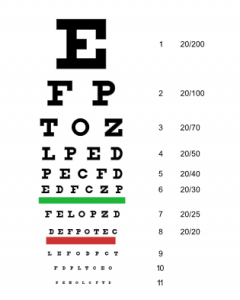“Caregiving Around the Clock”
Information derived from the Caregiver Action Network: http://caregiveraction.org/
National Family Caregivers Month – celebrated each November — is a time to recognize and honor family caregivers across the country. President Clinton signed the first NFC Month Presidential Proclamation in 1997 and every president since has followed suit by issuing an annual proclamation recognizing and honoring family caregivers each November.
Caregiving can be a 24-hours a day/7-days a week job. Caring for a senior with Alzheimer’s or a child with special needs can be non-stop. Providing care around the clock can crowd out other important areas of life. And you never know when you will need to rush to the hospital or leave work at the drop of a hat. What challenges do family caregivers face, and how do they manage them day and night?
Morning: Getting off to work. The average family caregiver is a working mother of school-aged children. Mornings become a tricky balancing act of getting the kids ready for school, making sure your loved one has what they need for the day before getting yourself out the door for work.
All Day Long: Managing medications. Up to 70% of the time, the family caregiver – not the patient –manages the medications. The more serious the condition, the more likely it is that the family caregiver manages the medications for the patient. This means ensuring your loved one is taking their medication correctly and maintaining an up-to-date medication list.
During the Workday: Juggling caregiving and work. Six out of 10 family caregivers work full- or part-time in addition to juggling their caregiving responsibilities at home. And most of them say they have to cut back on working hours, take a leave of absence, or quit their job entirely.
Evening: Family time and meal time. Ensuring that you get proper nutrition will help you maintain strength, energy, stamina, and a positive attitude. Nutrition is as important for you as the caregiver as it for your loved one. Caregiving affects the whole family.
Late at Night: Taking time for yourself. Late at night might be the only time you get a few minutes for yourself. Make sure you take time to rest and recharge. The chance to take a breather and re-energize is vital in order for you to be as good a caregiver tomorrow as you were today.
The Middle of the Night: Emergency room visits. Have you ever had to take your loved one to the emergency room in the middle of the night? Be prepared ahead of time with what you need to know and what you need to have with you.
During National Family Caregivers Month, we recognize the challenges family caregivers face when their loved ones need Caregiving Around the Clock!





 The Red Cross is always a good selection, and they are set up to take donations
The Red Cross is always a good selection, and they are set up to take donations 

 On Women’s Equality Day, we honor those courageous, relentless, and dedicated women who had marched, advocated, and organized for the right to cast a vote; that precious right has reinvigorated generations of women and galvanized them to stand up, speak out, and let their voices be heard across this great nation. Today, as we celebrate the anniversary of this achievement and pay tribute to the trailblazers and suffragists Federally Employed Women is commitment and dedicated to continue to advocate for equality for women and girls. We must continue to advancing forward on our journey towards equality and investing in our future!
On Women’s Equality Day, we honor those courageous, relentless, and dedicated women who had marched, advocated, and organized for the right to cast a vote; that precious right has reinvigorated generations of women and galvanized them to stand up, speak out, and let their voices be heard across this great nation. Today, as we celebrate the anniversary of this achievement and pay tribute to the trailblazers and suffragists Federally Employed Women is commitment and dedicated to continue to advocate for equality for women and girls. We must continue to advancing forward on our journey towards equality and investing in our future!

 Presidents’ Day is an American holiday celebrated on the third Monday in February. Originally established in 1885 in recognition of President George Washington, it is still officially called “Washington’s Birthday” by the federal government. Traditionally celebrated on February 22—Washington’s actual day of birth—the holiday became popularly known as Presidents’ Day after it was moved as part of 1971’s Uniform Monday Holiday Act, an attempt to create more three-day weekends for the nation’s workers. While several states still have individual holidays honoring the birthdays of Washington, Abraham Lincoln and other figures, Presidents’ Day is now popularly viewed as a day to celebrate all U.S. presidents past and present.
Presidents’ Day is an American holiday celebrated on the third Monday in February. Originally established in 1885 in recognition of President George Washington, it is still officially called “Washington’s Birthday” by the federal government. Traditionally celebrated on February 22—Washington’s actual day of birth—the holiday became popularly known as Presidents’ Day after it was moved as part of 1971’s Uniform Monday Holiday Act, an attempt to create more three-day weekends for the nation’s workers. While several states still have individual holidays honoring the birthdays of Washington, Abraham Lincoln and other figures, Presidents’ Day is now popularly viewed as a day to celebrate all U.S. presidents past and present.